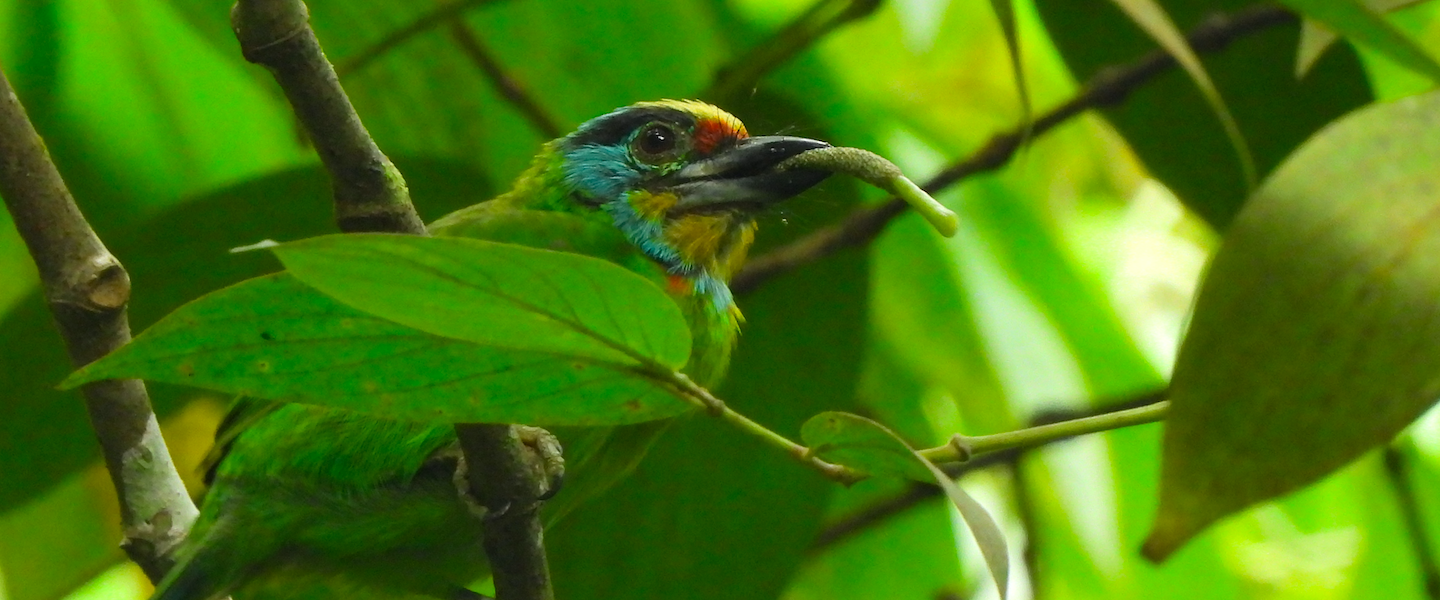The postnuptial migration is still going strong, and almost every day in the field has produced exciting sightings of migratory birds. On nearly every outing, I’ve encountered species such as the European pied flycatcher (Ficedula hypoleuca), whinchat (Saxicola rubetra), common redstart (Phoenicurus phoenicurus), and northern wheatear (Oenanthe oenanthe) throughout Alicante province. A particular highlight has been the flow of European honey-buzzards (Pernis apivorus), including a few still seen around Elx this week. A small flock of garganeys (Spatula querquedula) has also stayed at Clot de Galvany for weeks, and I spotted one there as recently as Friday. Some of the pictures illustrating these lines date from such outings. Besides, I had some personal “firsts” in Alicante over the last couple of weeks: a black kite (Milvus migrans) in El Hondo, observed with Darío Gijón and Marcos Real, and a red kite (Milvus milvus) in Villena with Jorge Verdú, Guillem de los Santos, and Andrea Cerdà. A family trip to Cuenca province also yielded a Eurasian hobby (Falco subbuteo) — my first sighting of this scarce migrant this season, hinting at the thrilling birding weekend to come.
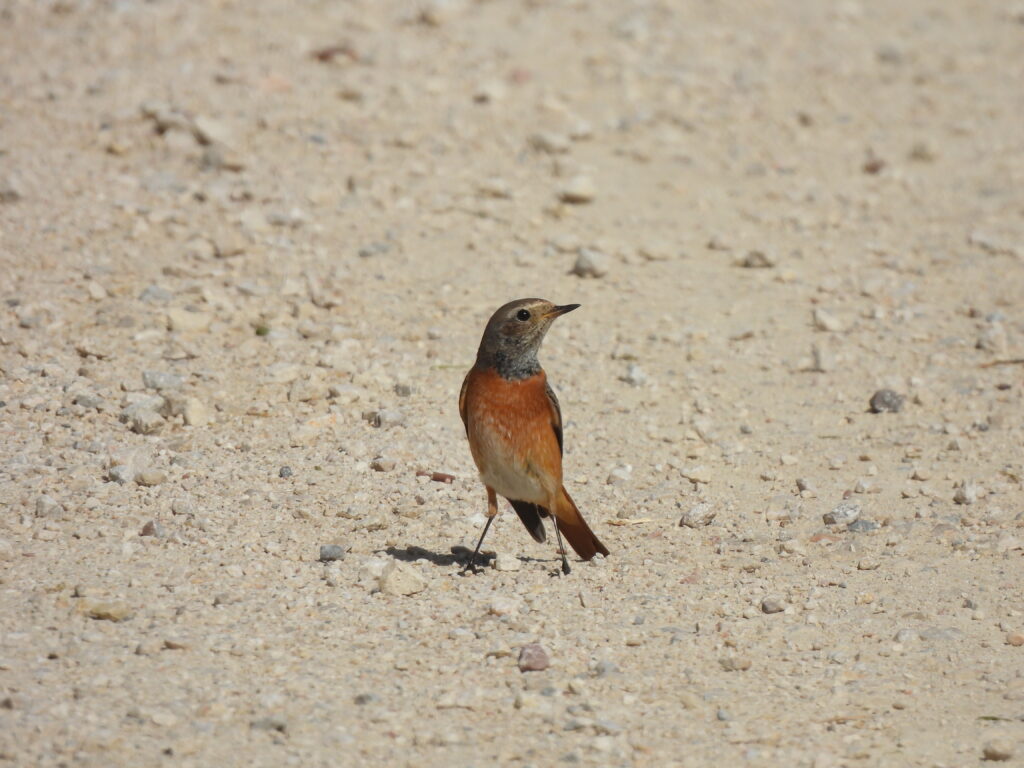
This year’s fall edition of the eBird Global Big Day coincided with Spain’s national holiday on Saturday, October 12th. With an early start, I picked up Darío in Elx, and we reached Villena just before sunrise at 7:00 AM, where Guillem was already waiting. As this was our only chance for nocturnal species, we managed to hear little owls (Athene noctua) and a long-eared owl (Asio otus) calling in the dark, mosaic landscape of pine forests and croplands.
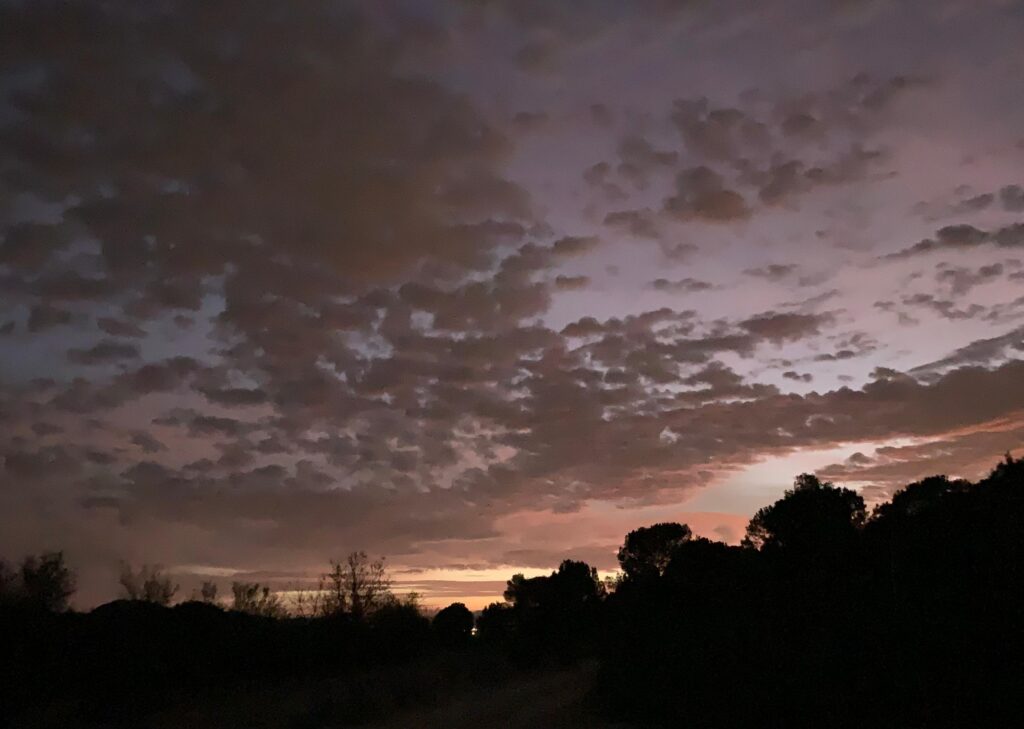
At dawn, the first light stirred the European robins (Erithacus rubecula), Eurasian blackbirds (Turdus merula), and European stonechats (Saxicola rubicola) into calling as we drove toward Partida de las Moratillas. Along the way, we could spot Eurasian jackdaws (Corvus monedula), Iberian green woodpeckers (Picus sharpei), Thekla’s larks (Galerida theklae), magpies (Pica pica), Iberian gray shrikes (Lanius meridionalis), and Eurasian linnets (Linaria cannabina). We caught sight of four red foxes (Vulpes vulpes) foraging in the open as we scoped the fields for birds. Just as the sun rose over the horizon, a Calandra lark (Melanocorypha calandra) started singing — a local specialty and my first-ever encounter with this species!
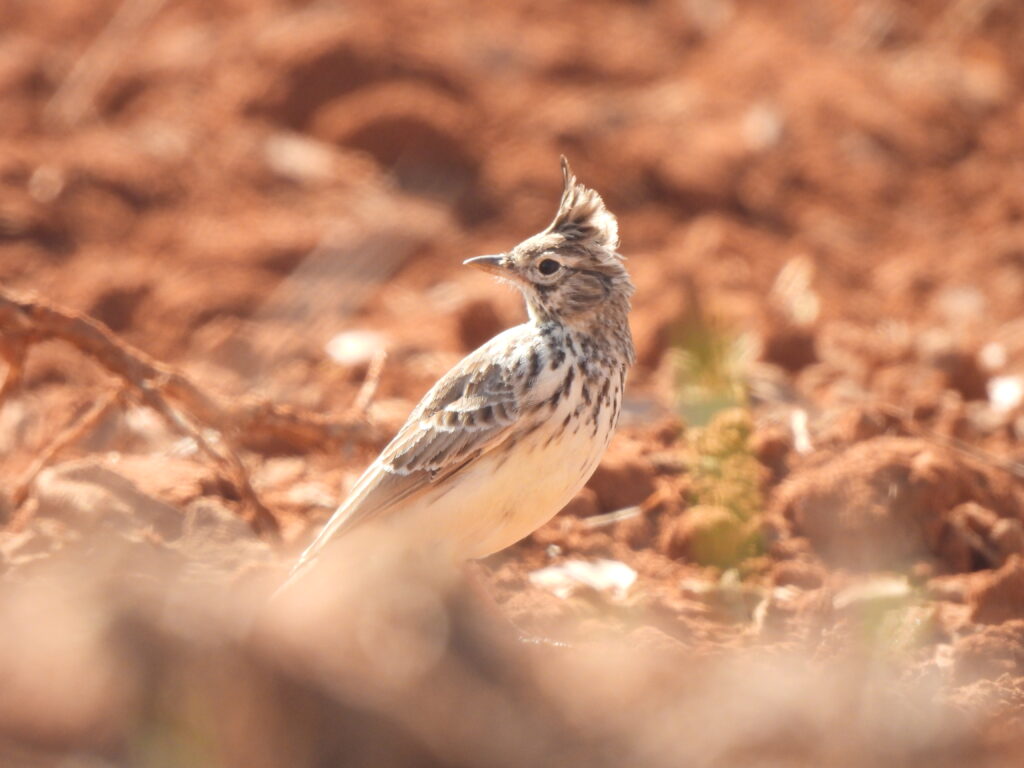
Our drive through Villena’s farmlands offered sightings of obliging mistle thrushes (Turdus viscivorus) and red-billed choughs (Pyrrhocorax pyrrhocorax), which we might had missed elsewhere. Common buzzards (Buteo buteo) were numerous, as were wintering Eurasian blackcaps (Sylvia atricapilla), which were feasting on olives alongside chaffinches (Fringilla coelebs), Sardinian warblers (Curruca melanocephala), spotless starlings (Sturnus unicolor), and great tits (Parus major). Tens of barn swallows (Hirundo rustica) and common wood-pigeons (Columba palumbus) were on the move. A passing peregrine falcon (Falco peregrinus) and a solitary Eurasian thick-knee (Burhinus oedicnemus) were particularly appreciated.
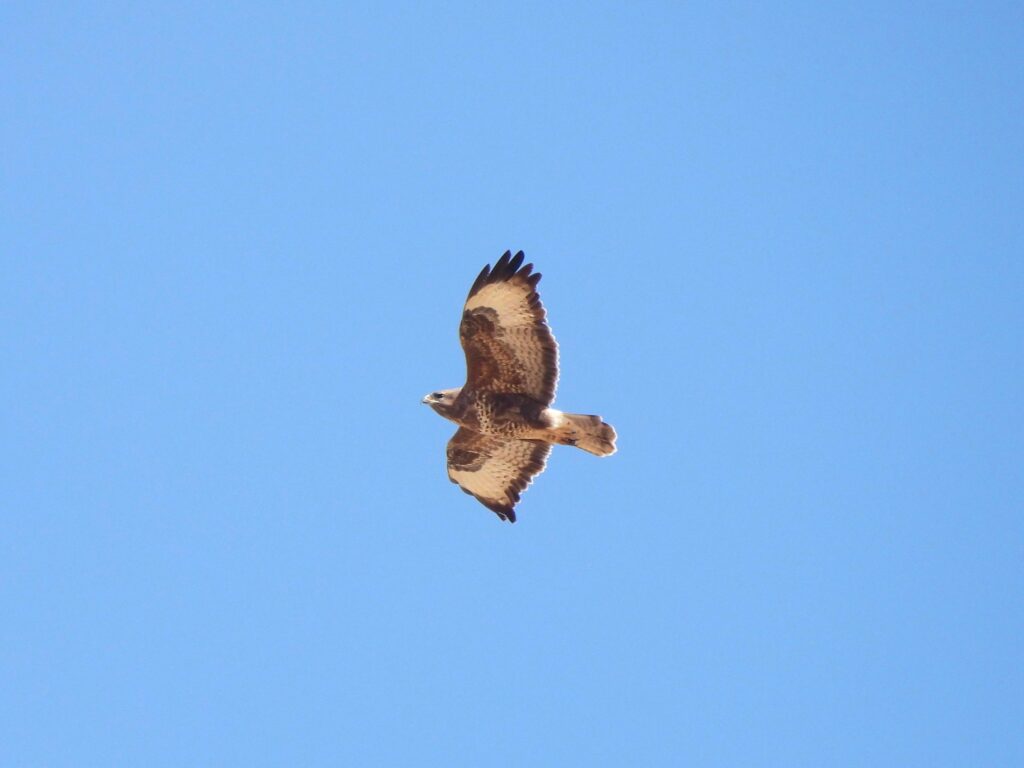
At Laguna de Villena we were greeted by house sparrows (Passer domesticus), collared-doves (Streptopelia decaocto), and the first of many kestrels (Falco tinnunculus). We stopped to search for the elusive Mediterranean short-toed lark (Alaudala rufescens), a localized species I’d previously missed despite multiple visits. This was not different in this case, as we only heard Thekla’s larks, goldfinches (Carduelis carduelis), and greenfinches (Chloris chloris), and spotted a whinchat perched on roadside herbs.
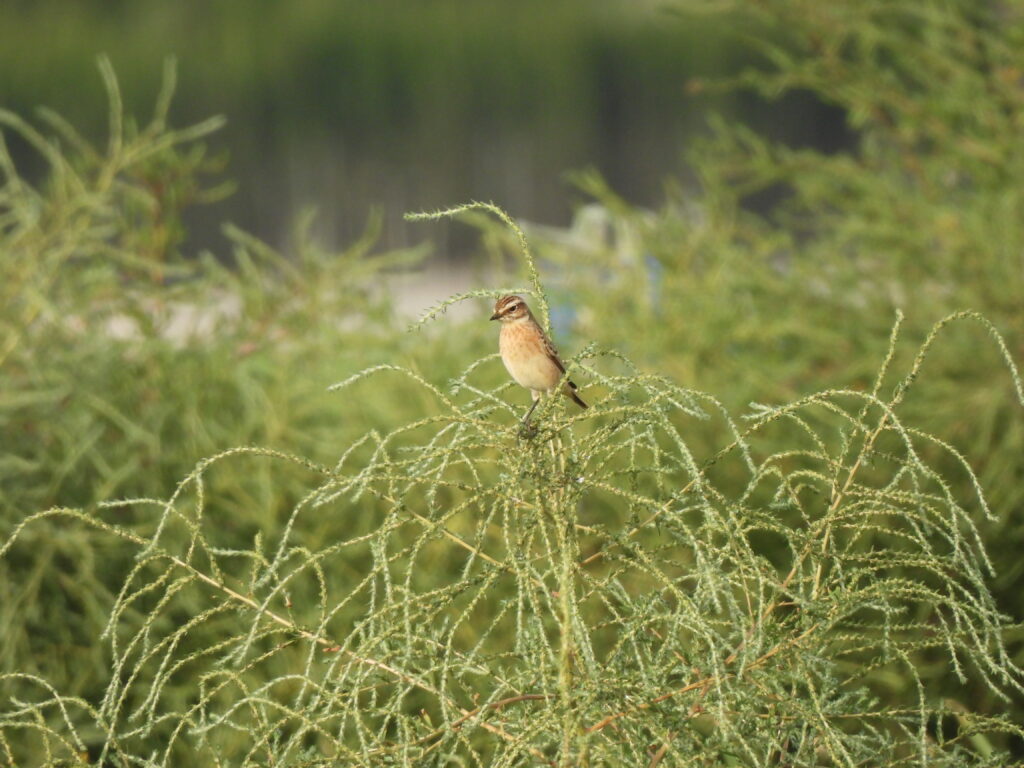
Our next destination, Charca de los Ojuelos, surprised us with a wealth of birdlife. The reeds were teeming with common reed warblers (Acrocephalus scirpaceus), and a great reed warbler (Acrocephalus arundinaceus) belted out its song, seemingly confused by the season. Other notable species included numerous Cetti’s warblers (Cettia cetti), zitting cisticolas (Cisticola juncidis), and a bluethroat (Luscinia svecica). While chatting with fellow local birdwatchers about a black-winged kite (Elanus caeruleus) that had been there for days but eluded us, we managed to find a flock of Eurasian tree sparrows (Passer montanus) among other sparrows. Another species that eluded us is the Spanish sparrow (Passer hispaniolensis), a local rarity that seems to join flocks of other sparrows in this spot. We rounded out our list with moorhens (Gallinula chloropus), water rails (Rallus aquaticus), green sandpipers (Tringa ochropus), distant corn buntings (Emberiza calandra) and gray herons (Ardea cinerea), and a calling common greenshank (Tringa nebularia) spotted by Darío.
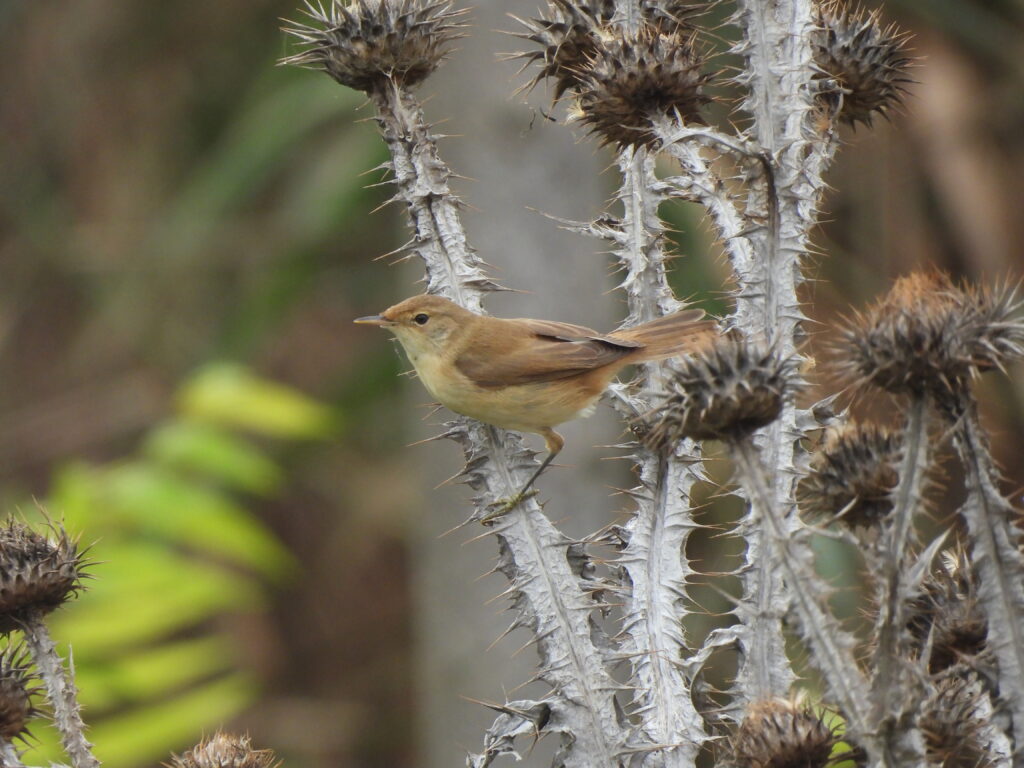
We moved next to the forested slopes between Beneixama and Fontanars dels Alforins, briefly crossing into Valencia province. This habitat offered unique birds we wouldn’t find elsewhere, including Dartford warblers (Curruca undata), crested tits (Lophophanes cristatus), short-toed treecreepers (Certhia brachydactyla), and red crossbills (Loxia curvirostra). The highlight, however, was a Eurasian hobby, which gave us prolonged views as it soared and ascended before heading south. Guillem, who had been waiting for this lifer of his, was particularly thrilled. A juvenile golden eagle (Aquila chrysaetos) bid us farewell from the road as we made our way south toward the wetlands of Alicante.
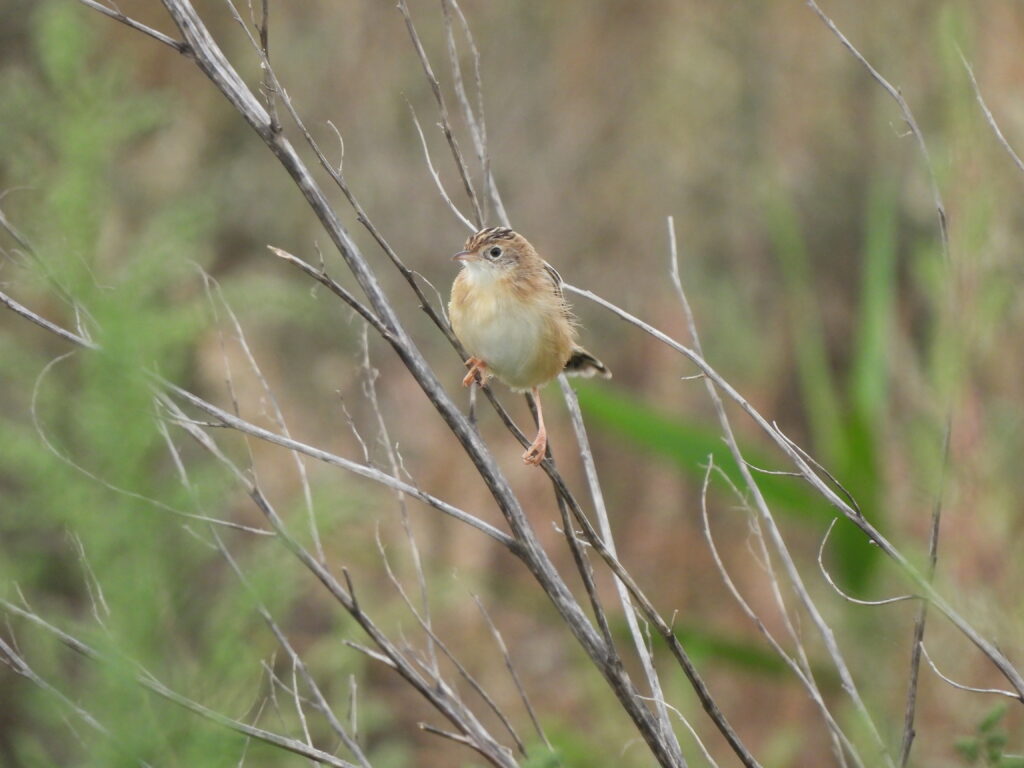
At Clot de Galvany, we encountered the typical wetland species despite the holiday crowds. Among the birds spotted were Eurasian teal (Anas crecca), little grebe (Tachybaptus ruficollis), northern shoveler (Spatula clypeata), red-knobbed coot (Fulica cristata), common kingfisher (Alcedo atthis), western cattle egret (Ardea ibis), and little egret (Egretta garzetta). A pair of obliging Eurasian spoonbills (Platalea leucorodia) that had lingered for days gave us great views, and we saw our first Eurasian crag-martins (Ptyonoprogne rupestris) of the season. We leave the area as soon as we spot distant white-headed ducks (Oxyura leucocephala) and hear a little bittern (Botaurus minutus).
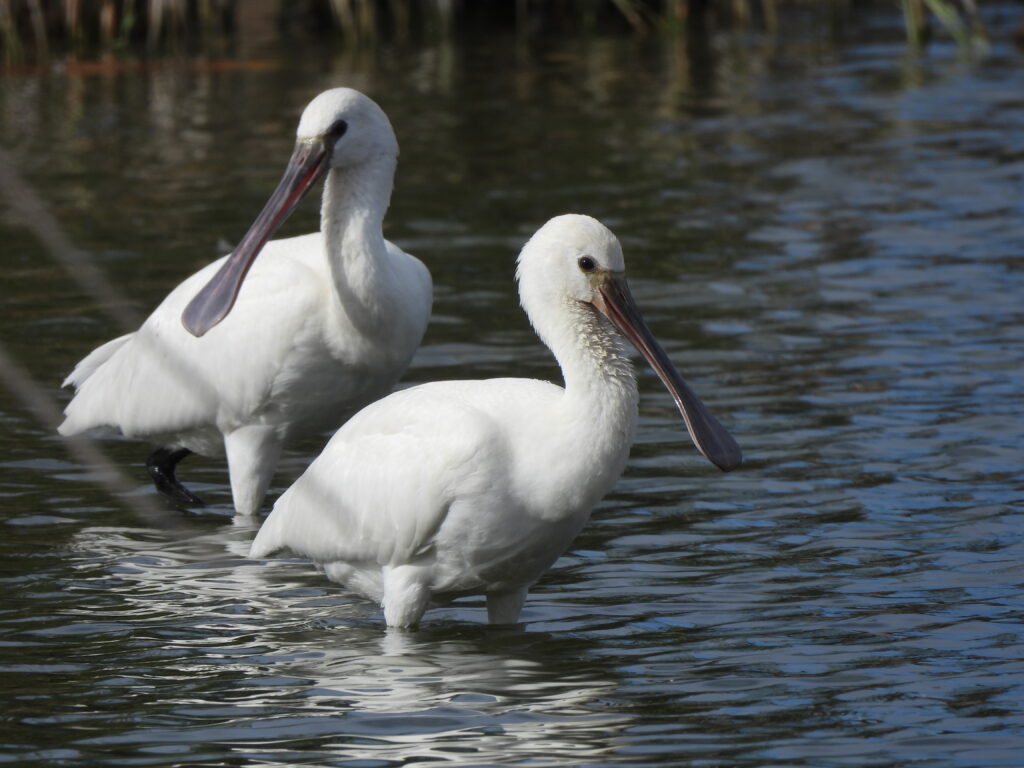
The big lagoon was alive with activity, hosting glossy ibises (Plegadis falcinellus), pied avocets (Recurvirostra avosetta), black-winged stilts (Himantopus himantopus), greater flamingos (Phoenicopterus roseus), black-headed gulls (Chroicocephalus ridibundus), yellow-legged gulls (Larus michahellis). We dipped some goodies that Darío and I managed to locate on a quick visit yesterday, including common pochard (Aythya ferina) and garganey. However, we connect with local specialties including marbled teal (Marmaronetta angustirostris), eared grebe (Podiceps nigricollis), and a surprise northern pintail (Anas acuta), which hadn’t been seen for days. Adding to the excitement, two Eurasian hobbies showed up and performed aerial displays. Seeing three hobbies in a single day was an incredible stroke of luck! European serins (Serinus serinus) and a motionless red-legged partridge (Alectoris rufa) are other additions in the area.
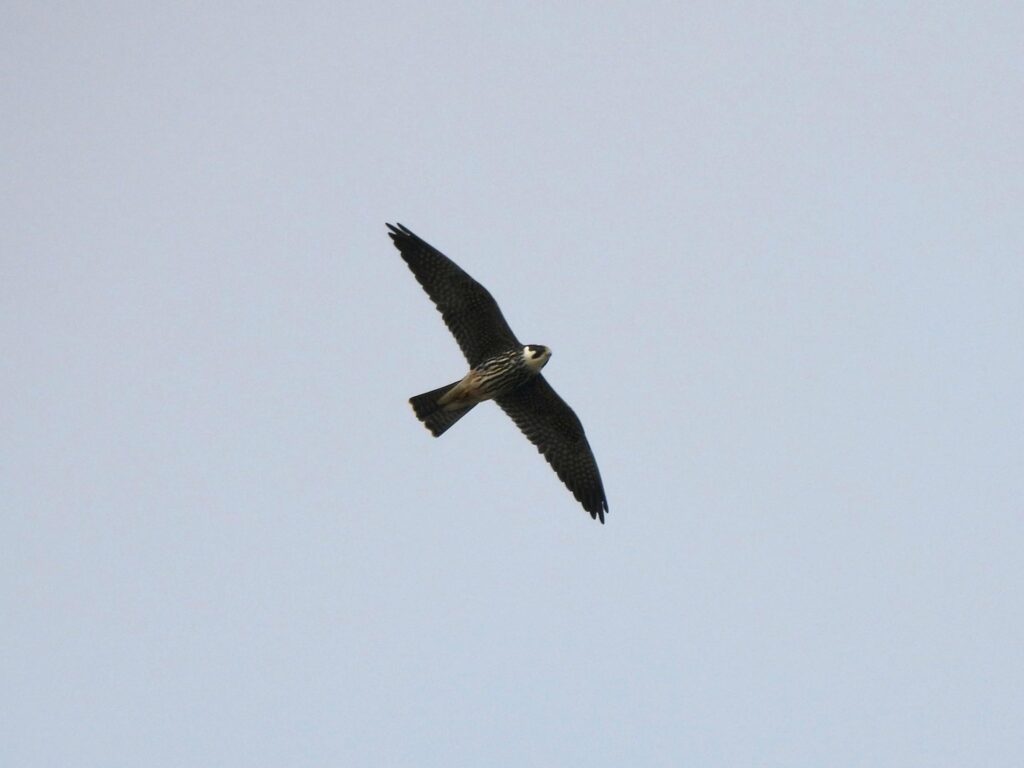
The drive from Clot de Galvany to El Hondo conveniently crosses Salinas de Santa Pola. Although the road is virtually always packed of cars, a sharp eye can spot nice birds. Guillem manages to locate a great egret (Ardea alba) close to Torre del Tamarit, where we stop for a moment. Slender-billed gulls (Chroicocephalus genei), great cormorants (Phalacrocorax carbo), common shelducks (Tadorna tadorna), and sandwich terns (Thalasseus sandvicensis) are easily seen. This is a classic wintering spot for several species: a great crested grebe (Podiceps cristatus), a Eurasian curlew (Numenius arquata), and two ruddy turnstones (Arenaria interpres) oblige.

Darío and I head to El Hondo visitor center while Guillem quickly stops in Catral to grab his lunch. He met up with Marcos Real and Borja Candela, who had been working on their own Big Day list. They had spotted numerous migrating raptors, with species we would miss including osprey (Pandion haliaetus) and honey-buzzards. Back in the visitors center, and despite the low water levels would be positive for waders, we only managed to add western swamphen (Porphyrio porphyrio), booted eagle (Hieraaetus pennatus), and a Eurasian sparrowhawk (Accipiter nisus). This sparrowhawk approached close to another raptor — a new Eurasian hobby, the fourth of the day, which gave us the closest looks. Incredible! Guillem joined us again and we left the area as soon as he connected with the abundant swamphen, given that he spotted the new raptor species during his lunch.
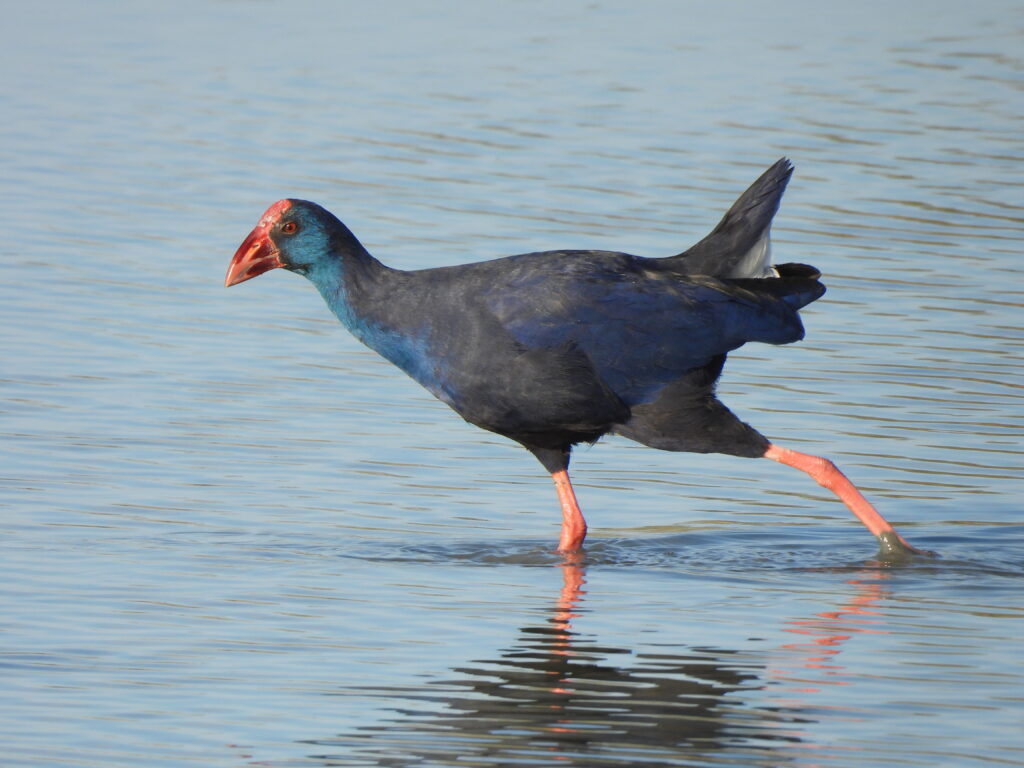
The water level at La Reserva proves ideal for waders. Before arrival, we tick an old reliable: the crested lark (Galerida cristata). Among the many pied avocets, we spot flocks of ruffs (Calidris pugnax) and common ringed plovers (Charadrius hiaticula), the latest mixed with dunlins (Calidris alpina), little stints (Calidris minuta), and little ringed plovers (Thinornis dubius). Scattered within the birds are several common redshanks (Tringa totanus) and spotted redshanks (Tringa erythropus), plus a bar-tailed godwit (Limosa lapponica), four black-tailed godwits (Limosa limosa), and yet another Eurasian curlew. Winter visitors are trickling in too, with common chiffchaffs (Phylloscopus collybita) and European starlings (Sturnus vulgaris) making their first appearances.

As the day draws to a close, we head back to Santa Pola for a quick scope of El Pinet. Just weeks ago, the area had been bustling with life — full of black terns (Chlidonias niger), common terns (Sterna hirundo), and collared pratincoles (Glareola pratincola) — but these migrant species have now moved on. Still, we connect with some of the regulars here: sanderlings (Calidris alba), Kentish plovers (Anarhynchus alexandrinus), Audouin’s gull (Ichthyaetus audouinii), and common greenshanks. On our way back to the car, Guillem notices two large birds approaching. One of them gives a faint, high-pitched call unfamiliar to me, while the other delivers the unmistakable raucous calls of a Caspian tern (Hydroprogne caspia). To our delight, a juvenile and an adult fly over us at close range.
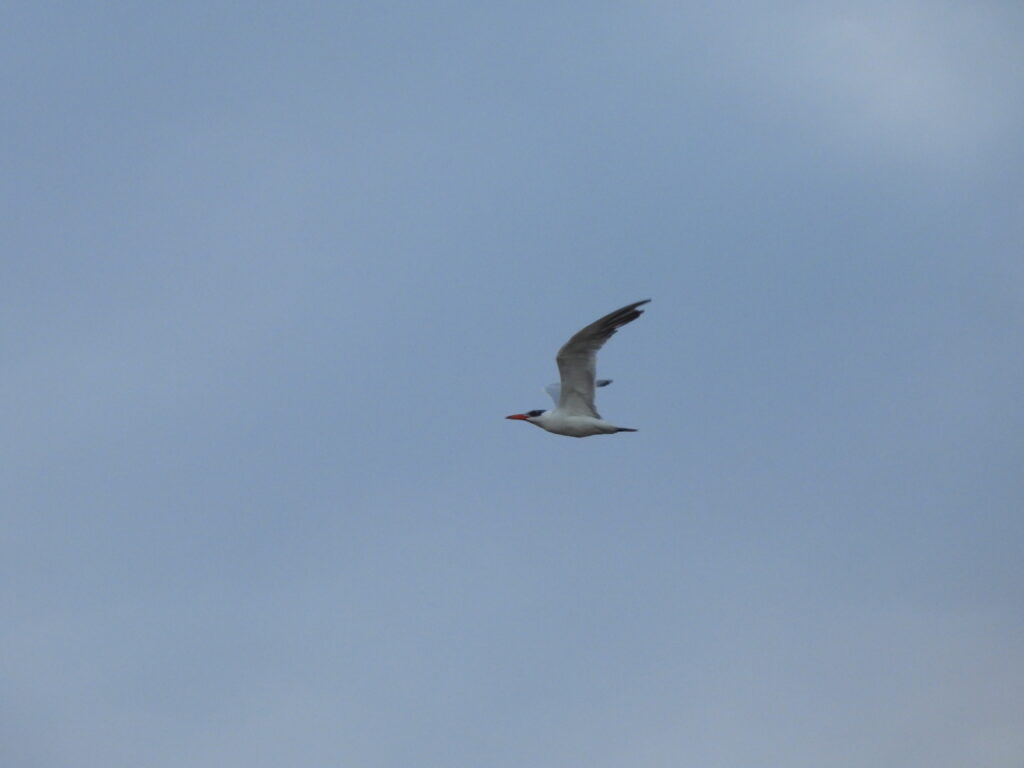
We finish the day gazing out at the sea. Large flocks of birds are feeding near the fisheries off Santa Pola, though they remain too far out for identification. The air is lively with black-headed gulls and Sandwich terns darting back and forth, but no other seabirds come into view. As we scan the horizon from the roadside, curious passersby stop for a brief chat. Our final addition is a Mediterranean gull (Ichthyaetus melanocephalus), which briefly rests on the sand beside an Audouin’s gull before some children scare them off.
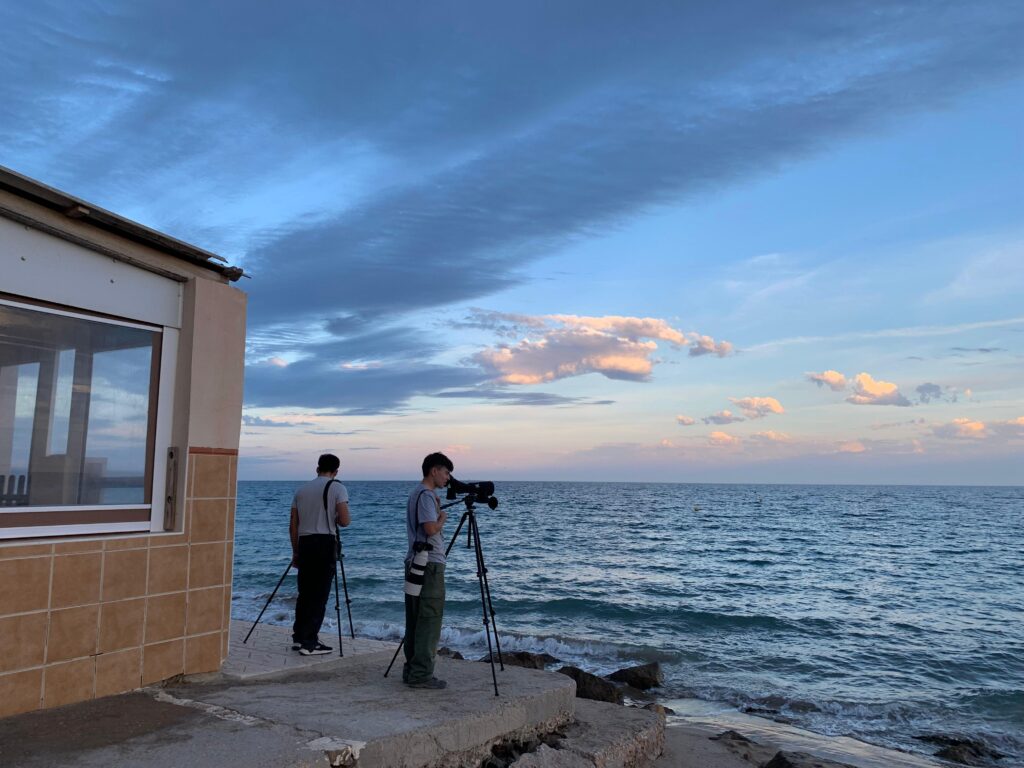
All in all, it has been a wonderful day wrapped up by the Mediterranean under a stunning sunset. We covered many kilometers but enjoyed a somewhat relaxed pace. As Guillem drives home, he manages a parting gift for himself: a black-crowned night-heron (Nycticorax nycticorax) at dusk. In the end, we tallied 107 species — I only missed two, the night-heron and a hoopoe (Upupa epops) only seen by Darío — which placed us fourth on the eBird Spain leaderboard. Most importantly, we dipped on several species usually found at their local hotspots, and there weren’t many rarities to chase this time around. This certainly gives us room for improvement, but as a first taste of a Global Big Day spent with friends, the day delivered a great impression.

